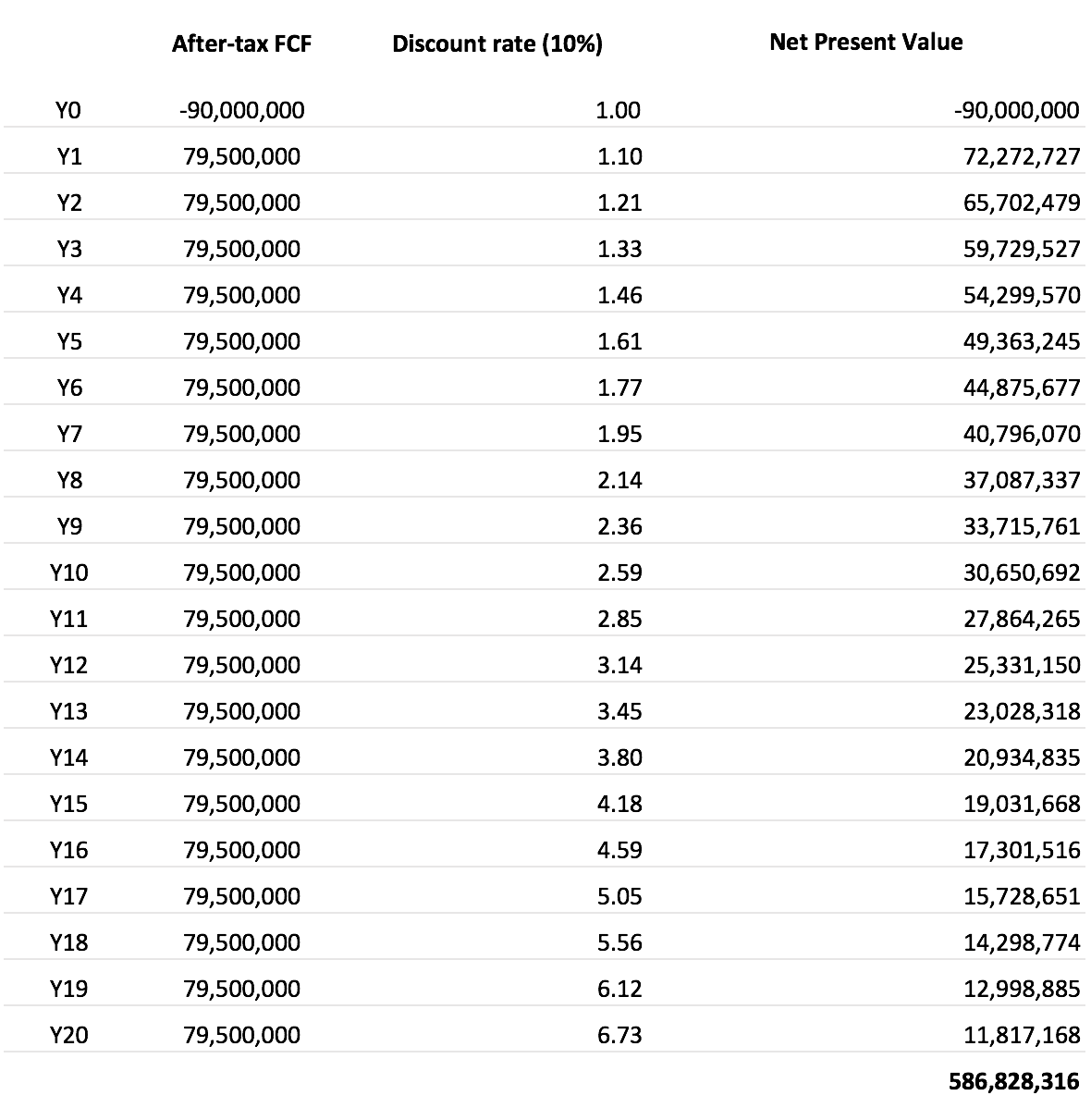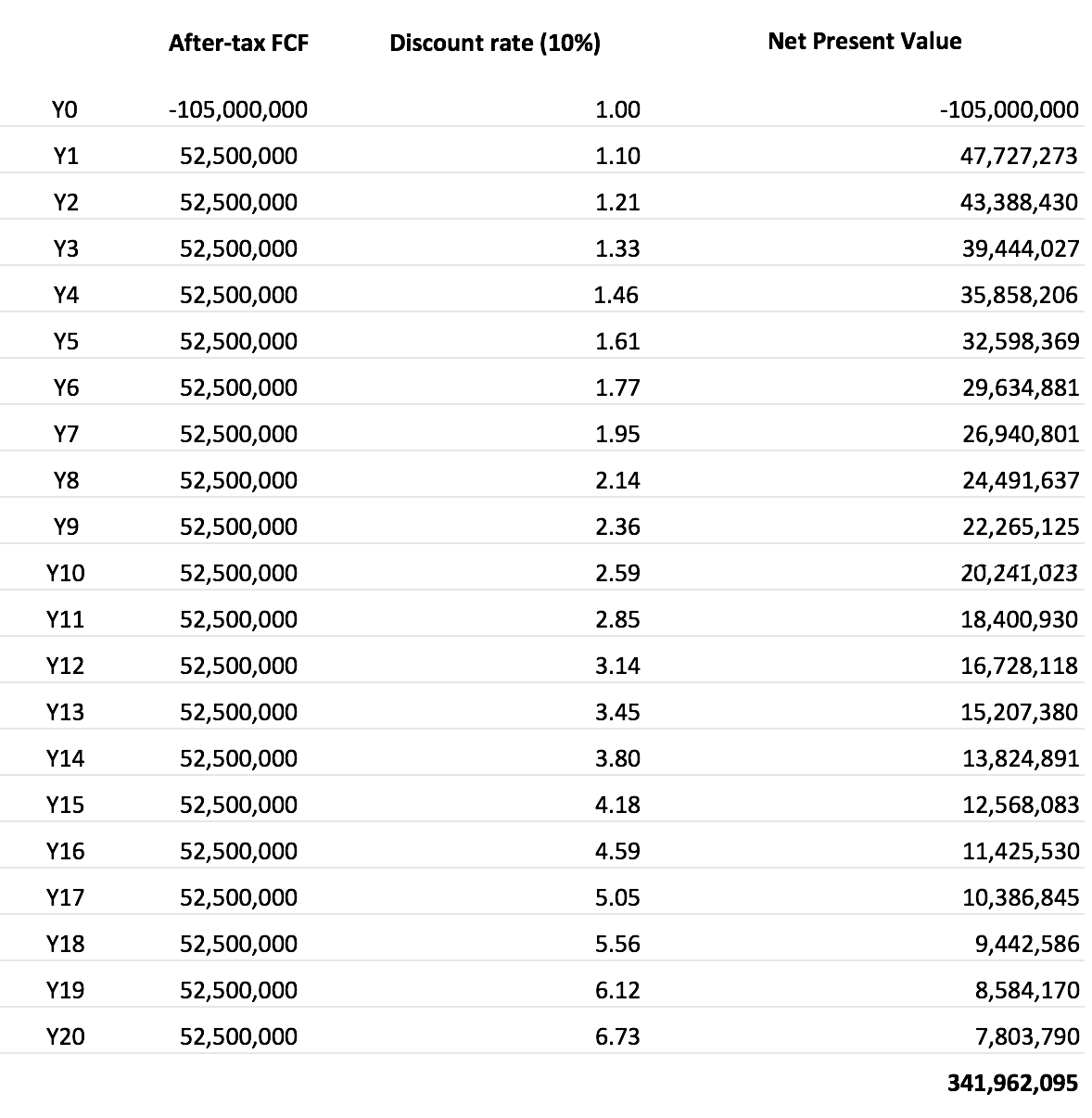amazing! Based on the spot prices as of at the end of February, Gen III Oil is expecting to generate a total revenue of C$200M per year (based on a 2,800 barrel per day plant), which includes a C$9M greenhouse gas emission tax credit (‘carbon credit’) from the government of Alberta. As you can see, the company is estimating its net operating income to be C$108M per year, and expects to pay C$33M per year in taxes and interest payments. If we would add the C$4.5M in depreciation rate back to the equation, the plant will generate an annual after-tax free cash flow of C$79.5M. Assuming a 20 year ‘plant life’ and using a discount rate of 10%, our calculations indicate an after-tax NPV10% of C$587M.
 We obviously don’t always blindly believe what a company tells us, even when the model has been checked and vetted by Stantec.
We obviously don’t always blindly believe what a company tells us, even when the model has been checked and vetted by Stantec.
In a second scenario, we will include a 15% lower revenue whilst increasing the operating expenses by 10%. That’s pretty harsh as the prices of the Group II and III lubricants usually track the price of used motor oil and vice versa. So when the Group II and III prices are down, the purchase cost of the used motor oil should also be trending down, and it’s really important to keep this in mind as Gen III Oil is basically agnostic to the price of crude oil. So, we’re stress-testing the model pretty hard with this double-negative assumption.
We will also increase the initial capex to C$105M to assume a 17% cost overrun.
 As you can see, even when stress-testing the model, the after-tax NPV10% remains high at C$342M. Applying a discount rate of 8% in the stress-tested model would increase the after-tax NPV8% to C$410M. Keep in mind these NPV calculations are based on a 100% ownership. As per the term sheet for the debt agreement, the debt provider will be issued warrants to purchase up to 4% of the operating subsidiary. As the purchase cost of this 4% remains confidential, you should assume a margin of error of a few percent in the calculations.
As you can see, even when stress-testing the model, the after-tax NPV10% remains high at C$342M. Applying a discount rate of 8% in the stress-tested model would increase the after-tax NPV8% to C$410M. Keep in mind these NPV calculations are based on a 100% ownership. As per the term sheet for the debt agreement, the debt provider will be issued warrants to purchase up to 4% of the operating subsidiary. As the purchase cost of this 4% remains confidential, you should assume a margin of error of a few percent in the calculations.
Needless to say these results are very impressive as the payback period in the adverse scenario will still be just 2-2.5 years…
https://www.caesarsreport.com/reports/report-gen-iii-oil-cash-flow-monster-making-used-motor-oil-high-end-lubricants/